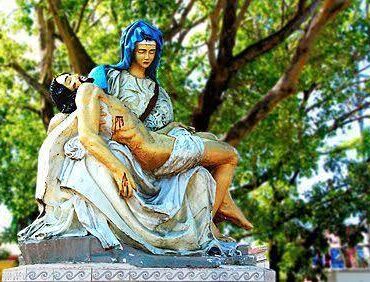Dressing up ‘santos’ with devotion and passion
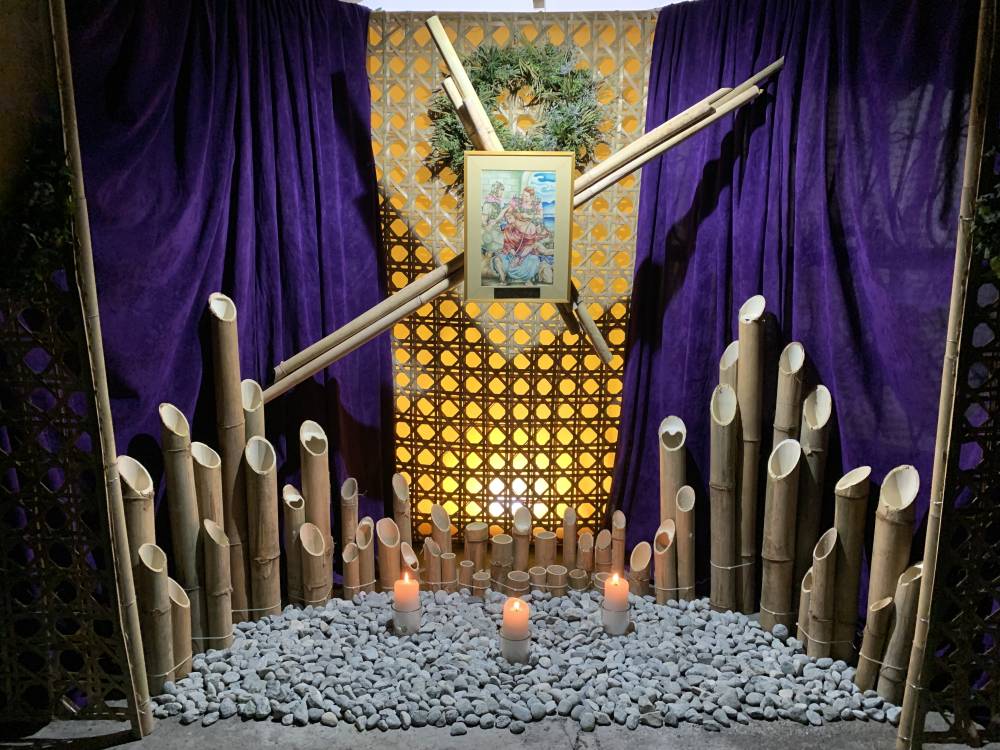
“Devotion turned passion” is how Rene Tolentino, a self-taught artist, describes his yearly tradition of dressing up Santiago (St. James), Sta. Marta (St. Martha), and other santos or poons (religious icons) for Holy Week processions in his hometown of Angono in Rizal.
It began when Tolentino’s family was offered in 2003 by their parish church to be St. James’ tagapangalaga (custodian). They then had the saint’s image sculpted in Paete town in Laguna.
The religious statue was purposely delivered that year to the Tolentino household on their matriarch’s birthday, Aug. 16. For them, this somehow became St. James’ birthday, too, though his feast day is May 3, which happens to be just two days before the wedding anniversary of Tolentino’s parents.
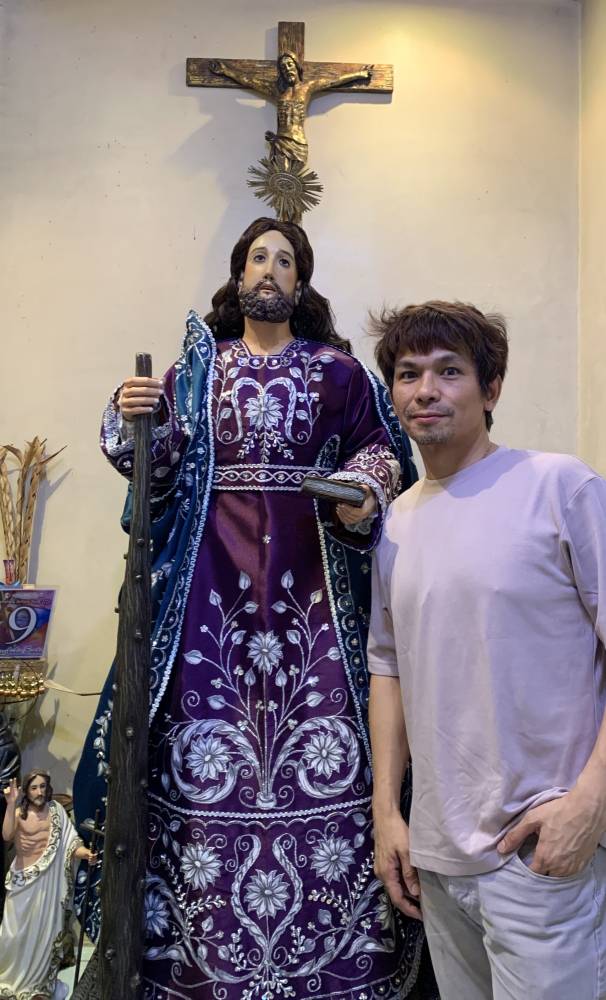
The following year, 2004, when Tolentino was starting his career as a hairdresser at 23 years old, he also began his task of dressing up the family’s religious statue for Holy Week.
At first, he drew inspiration from the many years he’d been watching processions since he was a child and as an active church member. He eventually developed his own styling method and network of sacred vestment makers, so much so that he has been tapped by other custodians, also called camareros or santeros, to style their religious statues. His list this year includes St. Martha, Mary Magdalene, and St. Cleophas, the father of St. James.
“I don’t see it as work because I don’t earn from it,” says the international hairdresser, who serves as vice president for Asia of the Shanghai, China-based Asia Hairdesigner Association. He adds that he’s usually given a budget or the prepared vestments.
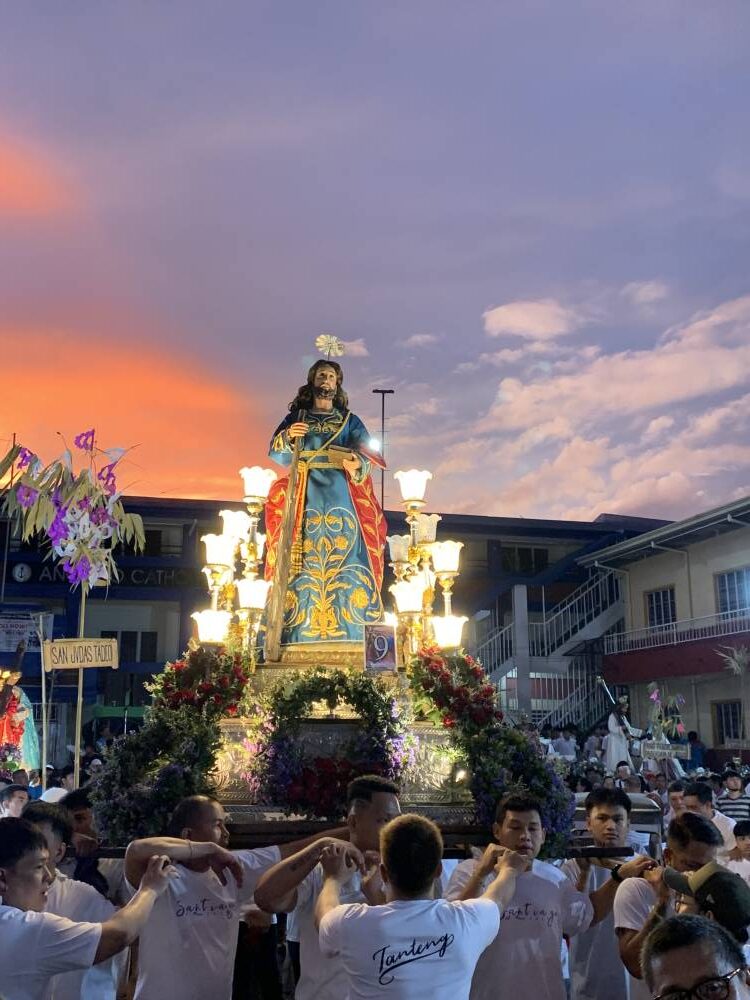
Full commitment
Tolentino tells Lifestyle in an interview that planning typically begins as soon as an idea hits him, even on Easter. That’s why his friends chide him for wanting an instant rewind of the Passion of the Christ.
“I really plan ahead for St. James,” he points out. “Like this April, I’m already thinking about the color that I haven’t used for the vestment.”
Once he decides on the color and design, he says he’ll get in touch with his longtime contact in Bulacan for embroidery work. He’ll place an order right away, but with a note for the embroiderer not to rush the job.
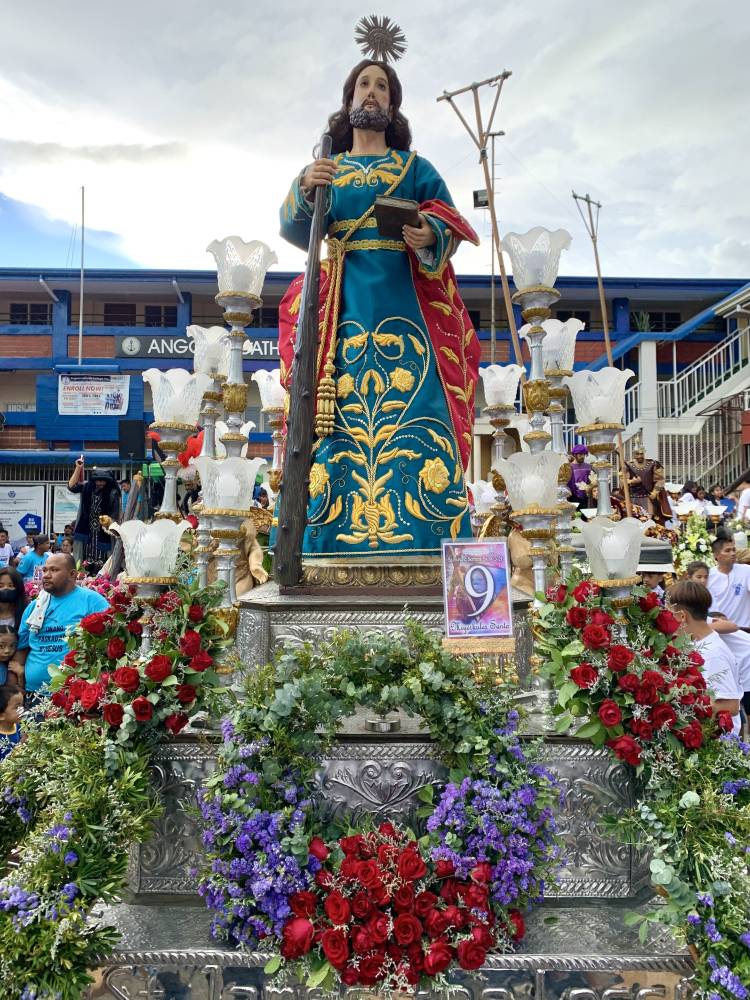
“Then what I’ll do every month, if I have extra money, like P3,000 or P5,000, I would send it to the embroiderer,” he explains. “So that by December, when they start working on the embroidery, I’ve already paid for it.”
Tolentino recalls that 10 years ago, he could get a full set of sacred vestments for P20,000. These days, the price usually starts at P40,000. It may be higher when done by named designers such as Jodee Perez Jose and Ramon Gutierrez.

His working relationship with Jose for the last three years is “collaborative work,” says Tolentino. “We’ll discuss all aspects, but at the end of the day, it’s his call on how to make the vestments.”
He adds, “I give him 100 percent freedom to express what he wants to do, that’s why most of the time, I get surprised with what he comes up with. It’s always more than what I expected. I guess it really helps that artistry is respected.”
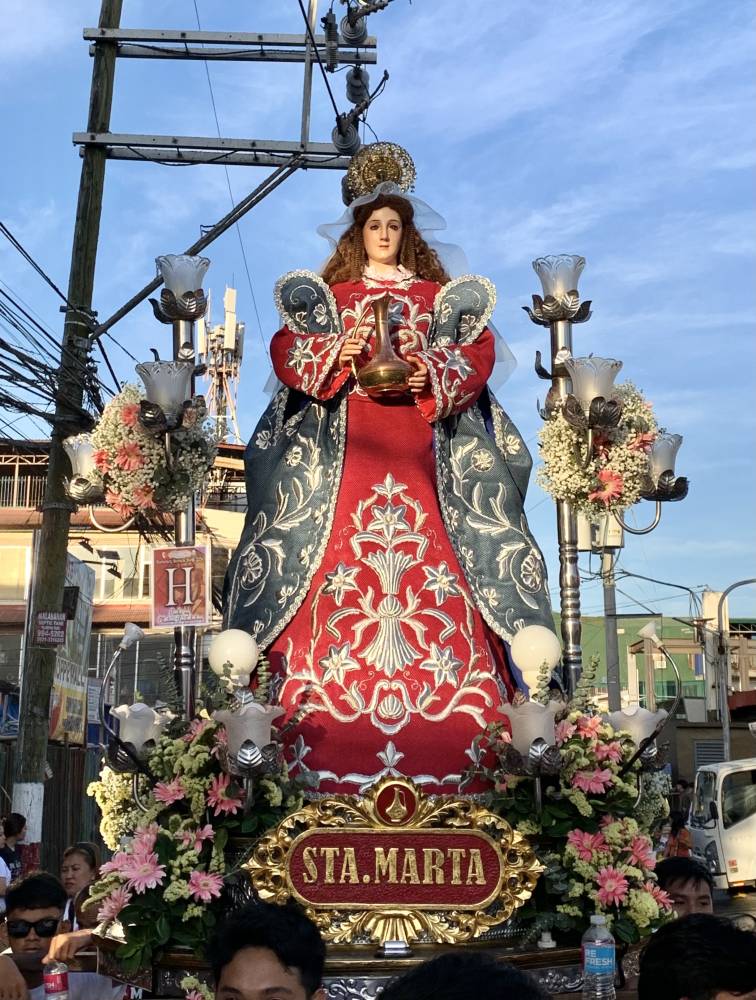
Keeping the core
Tolentino notes that going to a specialist in designing and making santo garments makes a big difference. This ensures not only the quality of work, but also that the religious context and traditions are observed. His only hope is for his fellow camareros to make good judgment calls when going for contemporary designs.
“We may modernize it to adapt to the taste of the people,” he says, “but what’s more important is to keep your core and the full essence of why you do it. Why are we doing it? Not for the sake of showing off that you’re rich, and that’s why you have a santo.”

He stresses that keeping the tradition alive doesn’t only honor what our elders have set for us, but also provides inspiration for the younger generations to continue.
“It’s just like art,” he says. “We have to take care of our cultural heritage. I guess that’s how people get to know me. As a person, I really take it seriously, a part of my life. Arts, culture, and in my visual arts, one of my inspirations is always faith.”















